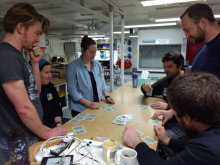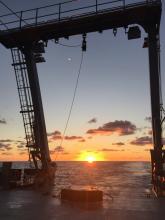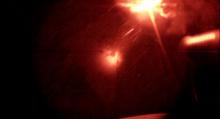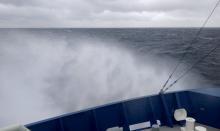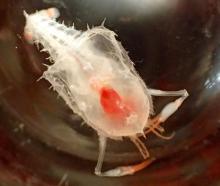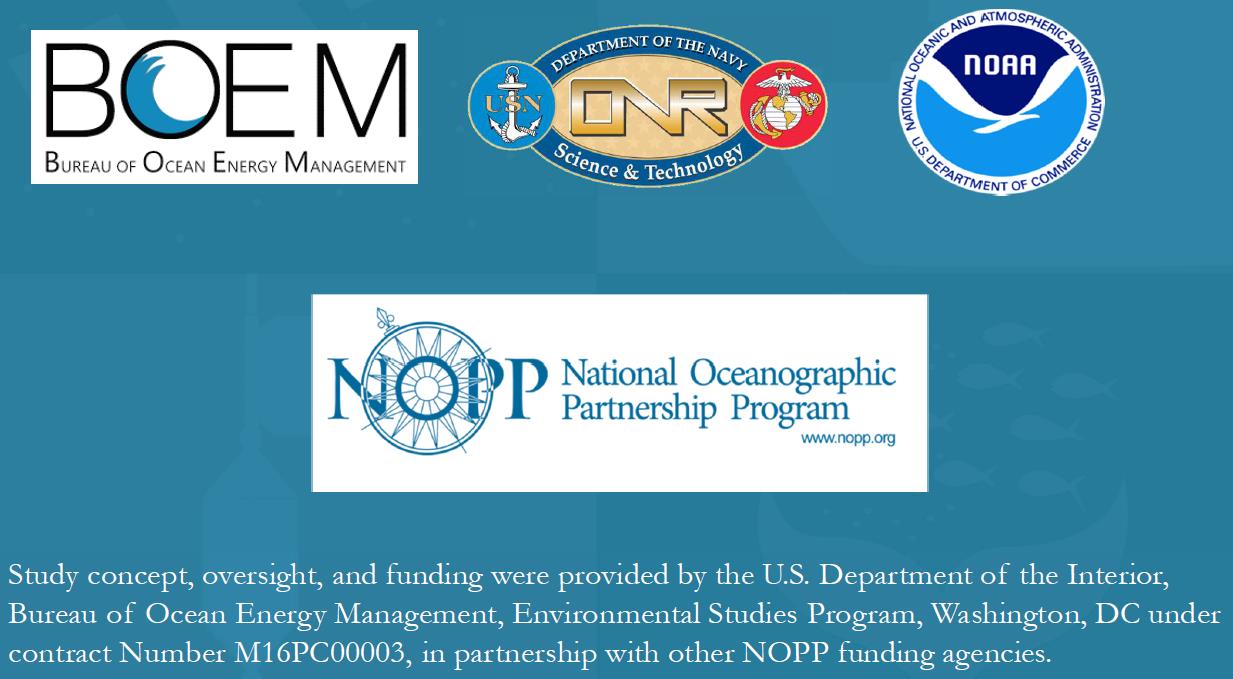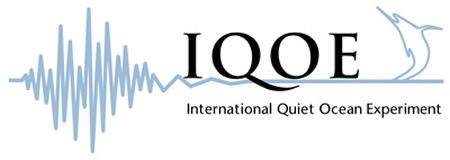Written by Jennifer Miksis-Olds.
In about an hour, the R/V Neil Armstrong will pull into port in Woods Hole, MA. Almost 4 weeks ago, we left Woods Hole with a vessel laden down with equipment, an ambitious science agenda, and some anxiety about how we would all fare in inclement weather or rough seas. We return to the dock with a sense of victory; we accomplished more than expected in data collection, there were no injuries or illness (besides some seasickness), we participated in recovering an autonomous sailboat lost at sea, and we squeezed in a good amount of fun.
Tags
We are finally able to see land today!
Written by Stephen Milea.
As the cruise draws to a close, we have begun to take the time to reflect upon what we have done and how we can improve for next time. We have discussed changes to be made in certain protocols to ensure that our data will be organized and our equipment maintained. After being on the night shift for the past three weeks, it has been nice to be awake during the day and to see the sun. It has also been nice to see our friends on the day shift for more than a few minutes.
Tags
We salute the R/V Armstrong crew for helping us to get the science done and have fun.
Written by Hilary Kates-Varghese, UNH graduate student in Oceanography.
There were two goals the Chief Scientist stated to us at the beginning of the cruise 1-get the science done and 2-have fun. I think we have successfully met those goals.
Today sort of has the feel of the last day of summer camp. Three and a half weeks ago, I remember walking around the lab, and no one was hanging out, everyone scattered to their rooms when they didn’t have a formal assignment. Now, everyone is in the lab, reminiscing about this cruise and excitedly discussing plans for the next one. At this point, we have finished all the field work for this cruise and are systematically compiling all the data--crossing the t’s and dotting the i’s.
Tags
The final hours of our ocean research.
Written by Chief Scientist, Joe Warren of Stony Brook University.
Well, the cruise is wrapping up as we've now redeployed our last bottom lander and are trying to get a few more environmental samples before we have to start heading North back to Woods Hole.
Tags
The Last Leg
Written by Carmen Lawrence, JASCO Applied Sciences
Today we began the final leg of our month long voyage. We have come full circle and are now back at our first station, Virginia Canyon. Here, we retrieved the first lander deployed and deployed an 8th lander in its place. We did this to obtain a complete set of data to analyze and see what kind of data we collected in the month since it was deployed.
Tags
Close your eyes and picture the bottom of the ocean. What do you see?
Written by Brandyn Lucca, graduate student at Stony Brook University, New York.
Is there a cornucopia of oddities and alien life that you’ve never see at the surface? Or do you see vast stretches of barren sand—devoid of life—which one could aptly describe as a moonscape? I can hear it now: “But Brandyn, it completely depends on where you are and at what depth!” That is true; however, unless we can filter every liter of water in the ocean, how can we discern the many biological differences at different depths around the world?
Tags
The wind is blowing Beaufort Six
Written by Calder Robinson, undergraduate at Dalhousie University, Halifax Nova Scotia.
A half hour passes, another, nothing but wind, waves and whitecaps. The water is a grey green; empty of everything but phytoplankton, three ghostly shapes swim by, gone, just empty grey green water. I didn't quite believe it. I made a note and moved on. The end of my shift arrives, the lookout pointed forward silently, more of them, five or six lazily surfing the waves and diving them around the bow. Dolphins. We weren't really alone.
Tags
Fish with their own lighting brighten our researcher's night!
Species like lanternfishes and hatchetfishes have photophores. When photophores activate they break up the silhouette of the fish making it more difficult for predators to see. Living in the deep sea can be especially hazardous considering the huge pressures and low temperatures, so it is all the more impressive seeing the adaptations they have evolved to cope with this extreme environment.
Tags
A Strangely Squishy Amphipod
Written by Hannah Blair, Stony Brook University graduate student.
The R/V Armstrong raced northward Monday, heading inland to Cape Hatteras to take some shelter from the bad weather and rough seas. On the way, though, we stopped at our Wilmington site early Tuesday morning to sneak in one last deep trawl (down to 1000 m). The trawl lasted over three hours, and we got some cool animals from it, including our second anglerfish of the trip and a very interesting large (and strangely squishy) amphipod, a type of crustacean.
Tags
Bye Bye Florida, back to winter we come!
Written by Jen Miksis-Olds.
Bye Bye Florida, back to winter we come! We all enjoyed the mostly calm seas and warm weather we found off of Florida. Some of us prone to seasickness even decided that we might be able to survive out here without our seasickness meds. Unfortunately that was rather short lived. Now we are just trying to hold onto that taste of summer as we make our way rapidly back North to escape some possibly rough weather. But this is exactly why bad weather days are built in when planning an oceanographic research cruise. Though bad weather doesn’t sound good to those of us still getting our sea legs, we are just grateful that we were successful in reaching all of our deployment sites without any significant problems.
Tags
Pagination
Copyright 2016 · All rights reserved

